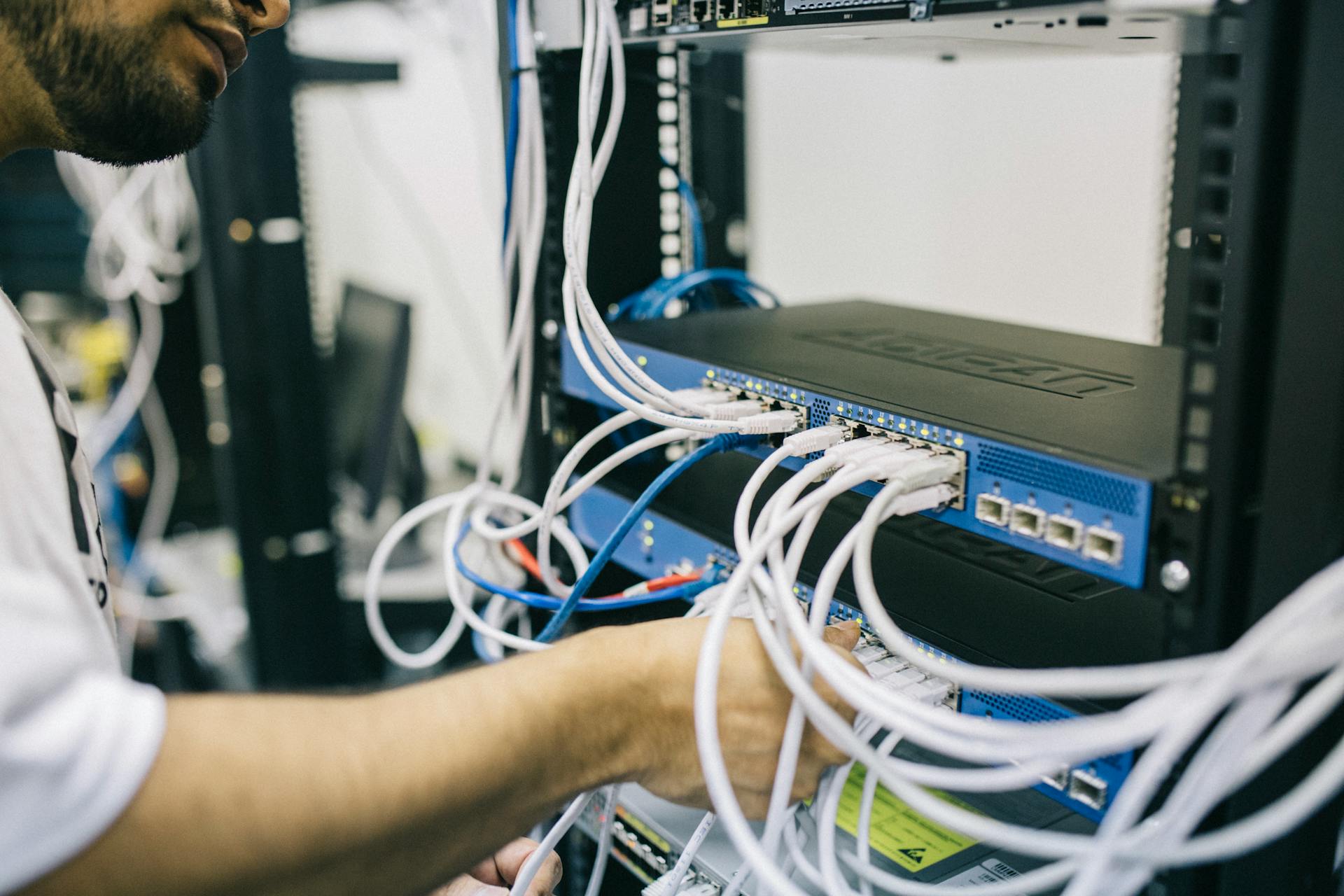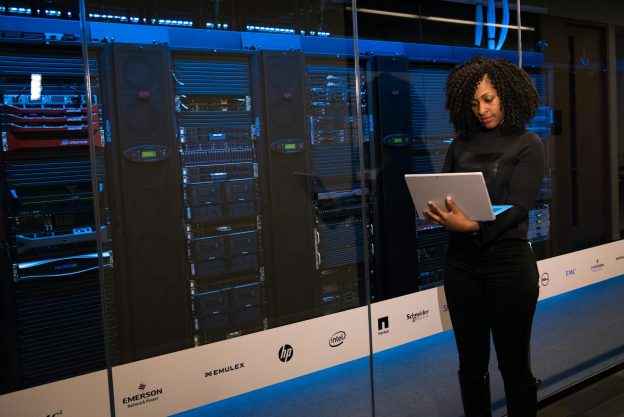The Internet Protocol (IP) is the backbone of the internet, enabling the routing and addressing of data packets so they can travel across networks and arrive at the correct destination. Every device connected to the internet is assigned a unique IP address, which ensures data reaches its intended recipient. This article explores the intricacies of IP, including its packet structure, routing mechanisms, and the differences between IPv4 and IPv6.
Understanding IP Packets
When discussing the Internet Protocol (IP), it’s crucial to grasp the concept of IP packets. An IP packet is akin to a physical parcel or letter with an envelope displaying address information and the data inside. IP packets are formed by appending an IP header to each data packet before transmission. This IP header includes vital details such as source and destination IP addresses, the type of IP (IPv4 or IPv6), and other control information. The payload of the packet carries the actual data being transmitted.
IP Routing Mechanisms
Autonomous Systems and Routing Protocols
The Internet consists of interconnected large networks, each managing specific blocks of IP addresses. These networks are called autonomous systems (AS). Various routing protocols, such as BGP, assist in directing packets across ASes based on their destination IP addresses. Routers use routing tables to determine the quickest path through the ASes to reach the desired destination. Packets move from one AS to another until they reach the AS responsible for the target IP address, which then routes the packets internally to their destination.
Function of Routing Tables
Routing with routers takes the routing table into consideration and uses the best route to send the data packet based on the IP address target. They ‘send’ packets along the pathway until they get to the other end. Routing tables are essential for determining the most efficient path for data to travel across networks. They store information about network topology and the various routes that data can take to reach its destination.
Path Selection and Packet Travel
IP routing acts as the invisible mapmaker of the internet, directing information packets from source to recipient. This process involves breaking down data into smaller pieces (packets) that travel independently through a network of routers. Each packet follows a unique path determined by a routing algorithm. This algorithm considers various factors beyond just packet size and header length to ensure efficient and reliable data transmission.
Related: How to Find Your Router’s IP Address on Any Device
Experience Seamless Connectivity with VMedia
VMedia offers advanced internet solutions tailored to ensure seamless connectivity and robust performance. Our cutting-edge technology and fibre offerings mean you can rely on a stable and fast internet connection, whether for work, streaming, or gaming.
With VMedia, enjoy uninterrupted online experiences and peace of mind, knowing your internet needs are in expert hands. Click here to find a plan.
Differences Between TCP/IP and UDP/IP
When comparing reliability and speed, TCP and UDP have distinct roles. TCP prioritizes reliability over speed, ensuring all packets arrive in order, which can result in delays if packets are missing. Conversely, UDP is faster but less reliable, as it doesn’t guarantee packet delivery or order. This makes UDP ideal for applications where speed is essential, such as live streaming and online gaming.
TCP requires a connection to be established before data can be transmitted. This involves a three-way handshake process, which ensures that both the sender and receiver are ready for data transfer. In contrast, UDP does not establish a connection before sending data. This makes UDP more efficient for applications that do not need guaranteed delivery, but it also means that data packets can be lost or received out of order.
The choice between TCP and UDP often depends on the specific needs of the application:
- TCP: Used for applications where reliability is crucial, such as web browsing, email, and file transfers.
- UDP: Ideal for applications where speed is more important than reliability, such as live streaming, online gaming, and voice over IP (VoIP).
Understanding these differences helps us choose the right protocol for our needs, balancing between stability and efficiency.
Optimize Your Online Experience with VMedia
At VMedia, we prioritize delivering high-speed, reliable internet to our customers. Our services are designed to optimize your online experience, offering consistent performance for all your digital activities.
With a focus on customer satisfaction, VMedia provides exceptional support and innovative solutions to keep you connected and productive. Choose VMedia for an internet service that meets and exceeds your expectations.
Related: What Internet Speed Do I Need? Here’s How Many Mbps

IPv4 and IPv6: A Comparison
Address Depletion in IPv4
For most of the internet’s history, Internet Protocol Version 4 (IPv4) has been the most widely used version. IPv4 uses a 32-bit addressing system divided into four sections. A typical IPv4 address, like 192.168.0.1, is also often the default address for consumer routers. IPv4 can support up to 4,294,967,296 addresses. However, the availability of IPv4 addresses has dwindled, prompting the development of IPv6.
Advantages of IPv6
IPv6 emerged as the successor to IPv4 after a period of exploration and collaboration. During this stage, various alternative protocol designs were put forward, including TP/IX (RFC 1475), PIP (RFC 1621), and TUBA (RFC 1347). The most striking difference between IPv4 and IPv6 lies in their address size. IPv4 utilizes 32-bit addresses, limiting the pool to roughly 4.3 billion unique identifiers. In stark contrast, IPv6 boasts 128-bit addresses, providing an astronomical number of potential addresses (approximately 3.4 x 10^38). While some exceptions exist, IPv6 generally outperforms IPv4 in terms of speed.
Current Adoption and Transition Challenges
Although adoption of IPv6 has been slow, it is gradually increasing. One of the main challenges in transitioning from IPv4 to IPv6 is the need for compatibility and interoperability between the two protocols. Many devices and networks still rely on IPv4, making the transition process complex. However, the benefits of IPv6, including its vast address space and enhanced security features, make it a crucial step forward for the future of the internet.
In today’s digital world, a reliable and secure internet connection is essential. VMedia leverages its expertise in high-performance internet solutions to ensure your online experience is smooth and enjoyable. Ready to experience the power of a VMedia internet plan? Contact us today to explore our options and find the perfect fit for your needs!
Unveiling the Internet’s Backbone: Understanding IP with VMedia
The Internet Protocol (IP) acts as the internet’s invisible backbone. It provides the essential framework for addressing and routing data packets across vast networks. Understanding IP, including IP addressing, packet creation, and routing, unlocks the secrets of how data travels efficiently and reliably from point A to point B. Whether using TCP for guaranteed delivery or UDP for lightning-fast speed, IP ensures the seamless operation of the complex web of global communication. As technology continues to evolve, IP’s role remains central, highlighting its critical importance in today’s digital age.
VMedia, a leading telecommunications company and broadcast distribution provider, understands the critical role of IP. With their expertise in high-performance internet solutions, VMedia can help you navigate the ever-changing digital landscape. Their in-depth understanding of IP allows them to optimize your internet connection for speed, reliability, and security, ensuring a smooth and enjoyable online experience for everything you do, from high-speed streaming to secure browsing.

